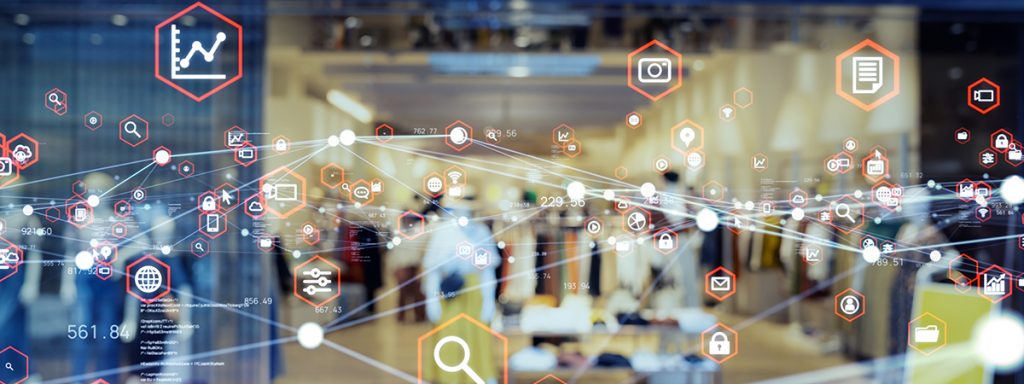IoT in retail. Fact or fiction?
IoT in retail. Fact or fiction?
The internet of things or IoT in retail. Is that reality? You’d be surprised. Because many people fail to understand what elements fall under IoT, it’s still seen as this mysterious tech. But it is much more commonplace than you’d think.
What is IoT?
It generally refers to any product or item that is connected to the internet and can interact with other products. A smart light bulb connected to a home assistant that can run programmes and respond to commands is a good example of IoT. And it has huge applications across every business sector, including retail.
Why is IoT important?
According to Wired, “Connected machines and objects in factories offer the potential for a ‘fourth industrial revolution’, and experts predicted more than half of new businesses would run on the IoT by 2020.” That means at least half of all new competitors to your retail business will use IoT for enhanced connectivity. It’s easy to see why you need to get involved now.
Where to start with IoT
First, you need a great cloud based WiFi solution. And we can help. With so many devices connecting to the internet and exchanging data, you need a robust system like Ruckus cloud managed WiFi. This will enable you to control everything across multiple sites from a single interface. It is the natural starting point for an IoT rollout. Once your WiFi is in place, you’ll want to consider popular IoT applications for retail.

Popular IoT in retail
With so many options, it’s easy to get paralysed by choice. But here are some recommended initial and forward-thinking IoT installations:
- Connected equipment – Everything from refrigerators to forklifts can be monitored via sensors to predict equipment failures, energy usage and maintenance requirements.
- Smart shelves – RFID combined with weight sensors can monitor for theft and advise of restocking needs by recording when items leave the shelf.
- Warehouse automation – Think robotic fulfilment and self-organising shelves that move autonomously for optimum warehouse layouts based on demand forecasts.
- Smart transit – IoT tracking can enable better fleet utilisation, smarter routes and more fuel economy.
- Customer satisfaction – Poll for feedback before customer’s exit your store with IoT colour-coded, emoji button consoles.
- Asset tracking – Prevent loss by using IoT to track baskets, scanners and trolleys.
- Cloud checkout – Using tags, automatically record and charge customers for items in their basket without the need for checkout tills.
- Robotic assistance – Follow the example of Lowe’s and employ robotic sales assistants like LoweBot or automated inventory scanning team members like the ones being piloted at Target.
- IoT-connected manufacturers – Consider partnering with manufacturers who use IoT to leverage smarter production methods, better distribution and fewer overheads.
- Smart layouts – IoT trackers can analyse traffic patterns in your store to reduce bottlenecks and increase conversions for better turnover.
- Digital pricing – Provide a superior customer experience with dynamic IoT-enabled pricing that reflects the best value anywhere.
- Omnichannel experience – Forge a connection between customer’s devices and store IoT for more personalised shopping on and offline.
Keen to start your IoT journey? Let’s hit the ground running with a robust Ruckus WiFi installation. Harness the power of the cloud for minimum IoT connectivity and centralised management. Reach out to our helpful team today to discuss your operation in detail.